For me nothing is abstract. In fact, I believe there is nothing more surreal, nothing more abstract than reality. –Giorgio Morandi
OBJECTS
Has surrealism always, in some form, existed? It is as difficult to say as it is to say whether a self-professed surrealist would answer yes or no.
Joseph Cornell was not a self-professed surrealist. His artwork, though, fits more comfortably in that categorical box than any other. A bottomless box, one might say, containing his many boxes, his many worlds. He called some of his boxes 'hotels,' and this to my mind seems apt: places to stay for a while, to live in, but places where one is merely passing through: transient, yet fixed. One is changed by having lived in these strange hotels. They evoke vacations to nowhere– or vacations to familiar places, places we may have seen vividly– or may have seen only once– or may have only heard of.
Cornell's work feels surrealist because it is unexpected. A perfectly arranged series of elements, perfectly contained. Yet the items take on totemic resonance by being unrelated, mis-matched– like those in a wunderkammer, or cabinet of curiosities– little glass bottles stoppered with cork; maps of the moon and of constellations; cut-outs of birds mounted on perches; wooden balls; children's toys; twigs; scraps; fragments.
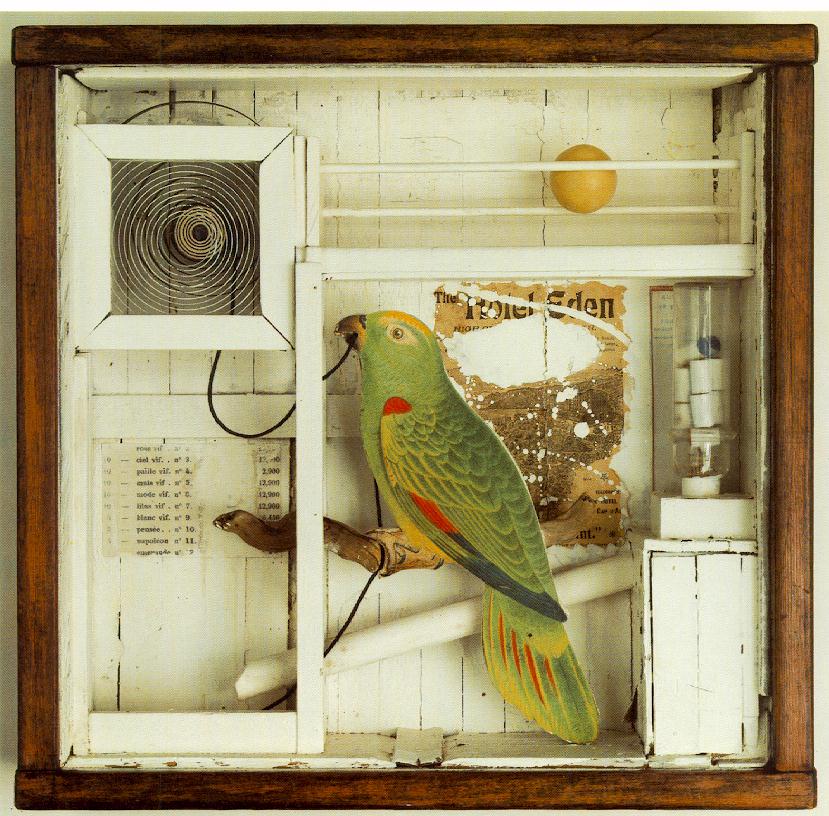
Untitled (The Hotel Eden) (c. 1945)
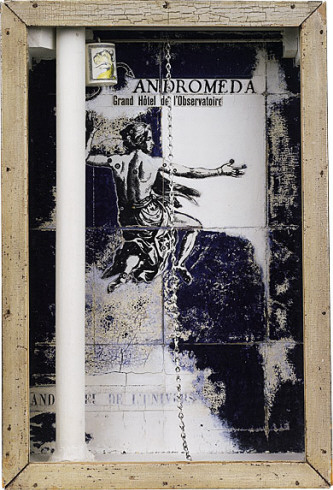
Andromeda: Grand Hôtel de l'Observatoire (1954)
These boxes, these hotels, are locales for memory. The trivial objects that Cornell picked up in dime stores and junk shops assume a significance beyond their triviality; through the vehicle of surrealism, their very placement as elements of a set activates their correspondence. Cornell's approach abstracts his objects, but arranging them into a set grounds them.
The wild perfection of surrealism owes its suasion to the careful deployment of recognizable objects seen in unfamiliar terms. Dali's melting clocks, Oppenheim's fur-lined teacup, Varo's vegetal cathedrals– these images push our recognition of the real into a recognition of the imagined. (As Marianne Moore characterized poetry, they are "imaginary gardens with real toads in them.") The arrangement of items in a Cornell box fascinates us, visually of course, but equally through its quality of referring. Referring to what exactly? Memories, I think, of places we cannot quite identify, because they are not real. The Pink Palace, the Hotel Eden, the Andromeda Hotel– to name just a few– are eidetic places, hotels we have only seen in our dreams.
The poet Charles Simic wrote a wonderful book of prose poems about Cornell, entitled Dime-Store Alchemy. Simic says the boxes are "reliquaries of days when imagination reigned." A beautiful phrase, and it applies just as well to the poems themselves. Combining personal essay, art criticism, prose collage, and lyric reverie, the poems evoke the mysteries of Cornell's art– mysteries that restore, rather than obstruct, the imaginative potential. The experience of surrealism, however aleatory, is one in which chance encounters between seemingly disparate elements create a meaningful resonance.
Here is Medici Slot Machine.
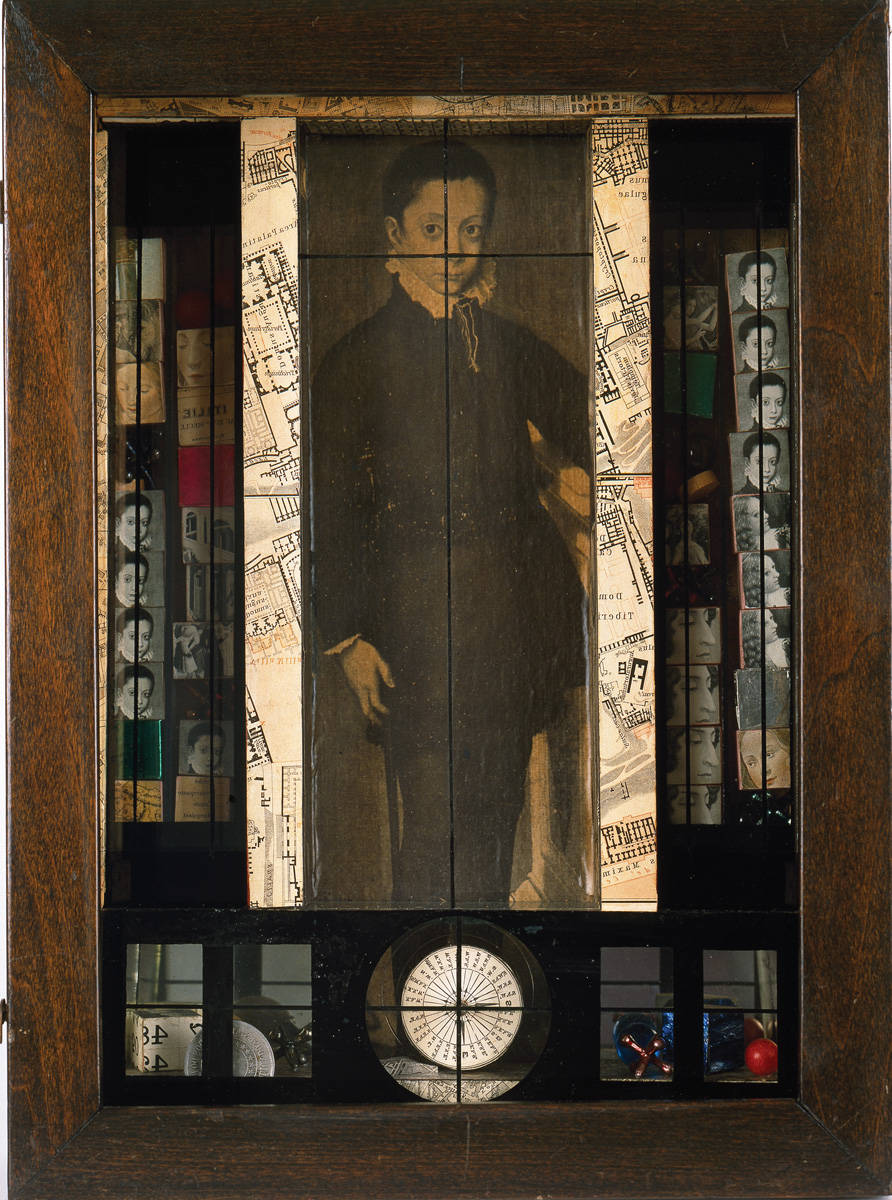
Medici Slot Machine (1942)
Simic describes the piece as "a poetry slot machine offering a jackpot of incommensurable meanings activated by our imagination." The very title Medici Slot Machine (not to mention Simic's own Dime-Store Alchemy) announces a chance encounter, an unexpected convergence.
CITIES
It is in the city that these chance encounters proliferate. Cornell would wander through New York in search of objects, but also (according to his journals) in search of emotions, sensations, however minute or fleeting. Simic, too, is drawn to the symbolic force of cities, to their mysterious, haunting spell; in one poem, he writes: "The city is the place […] where our separate intuitions momentarily link up." The city, like the hotels of Cornell, is an ideal setting for the surreal dream-state. It is vast, complex, yet contained. It is a realm of unpredictability. For Simic, the city elicits an almost mystical sense of shared consciousness.
From Baudelaire's Paris Spleen through Italo Calvino's Invisible Cities, the city has acted as a kind of emblem for oneiric experience. Cities can become labyrinths (Simic, Rimbaud) or landscapes of the soul (Baudelaire) or fabled places of myth (Calvino).
The experience of the city– whether a real or imagined one– expresses an aspect of the surrealist aesthetic that cannot quite be represented in a static image. In terms of Symbolist poetry (a significant catalyst for Surrealism), this experience has come to be defined by Baudelaire's notion of the flâneur. Baudelaire conceived of the flâneur as an observer of modern metropolitanism, one who, through observing, actively participates in the city's vitality. The flâneur epitomizes the restless, roving mind in an urban realm, and finds a contemporary analogue in the speaker of the poems in Dime-Store Alchemy).
In Illuminations, Rimbaud envisions imaginary cities, Escher-like and hallucinatory, through which one wanders in a state of heightened perception, unalloyed to the rigor of logic. In "Cities (I)," he writes: "At several points on the copper footbridges, the platforms, the stairways that wind around covered markets and pillars, I thought I could judge the depth of the city! […] For today's tourist, orientation is impossible." Unlike Baudelaire's flâneur, Rimbaud views the city as a puzzle for which there is no solution; the bizarre cities of the Illuminations are comprised of a multitude of urban aesthetics, combined ad-hoc, eliciting a dazzling, disorienting sense of the sublime.
Orientation may be impossible, but for Rimbaud, the disparate attributes of his conceptual city are intertwined in their symbolic, sensuous allure. The plazas, bridges, and streets of the city take on a unique power when perceived as parts of a whole, like pieces of an unassembled puzzle. "Cities (II)" describes "canals suspended behind the chalets" and "castles built of bones." These heteroclite canals, chalets, and castles become surreally evocative because of their juxtaposition. In Rimbaud's city they are parts of a set, the same way that Cornell's objects gain their symbolic import within their particular box.
In film noir, the city becomes a different kind of puzzle– a series of traps, a shadowy maze of menace. The tropes of film noir are enhanced by the backdrop of the city, since it is a realm of immense anonymity; consider the last lines from Jules Dassin's The Naked City: "There are eight million stories in the naked city. This has been one of them." The film noir landscape is one in which the past, chance, and the unknown can all converge in a dark alley or a seedy hotel. The urban streets of film noir are enlaced with a skein of allies and enemies– except it is impossible to distinguish one from the other. Film noir, like much surrealist art, depends on duality. Even the titles of the films often alert us to a surreal duality: The Naked City, The Asphalt Jungle, The Glass Key.
From The Naked City:

The Naked City (1948)
Alienation is integral to the film noir protagonist: he is alienated from those around him, or from himself (often both). He is trapped by his actions: he has something to hide, or something he cannot escape (often both). And, finally, there is the persistence of the need to solve– or more accurately, to resolve, to get to the bottom of the mystery. The trick of film noir is: at the bottom of the mystery, one finds the depths of the human soul.
From The Asphalt Jungle:
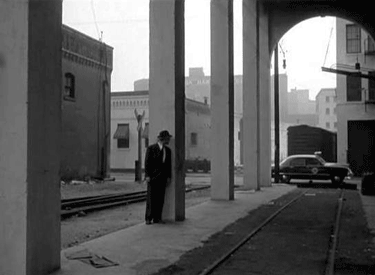
The Asphalt Jungle (1950)
This looks every bit like a De Chirico painting. We must imagine the surreal not solely in terms of an art movement, but in terms of an ethos, a way of seeing.
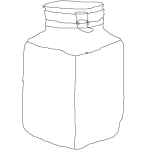
 contents
contents
